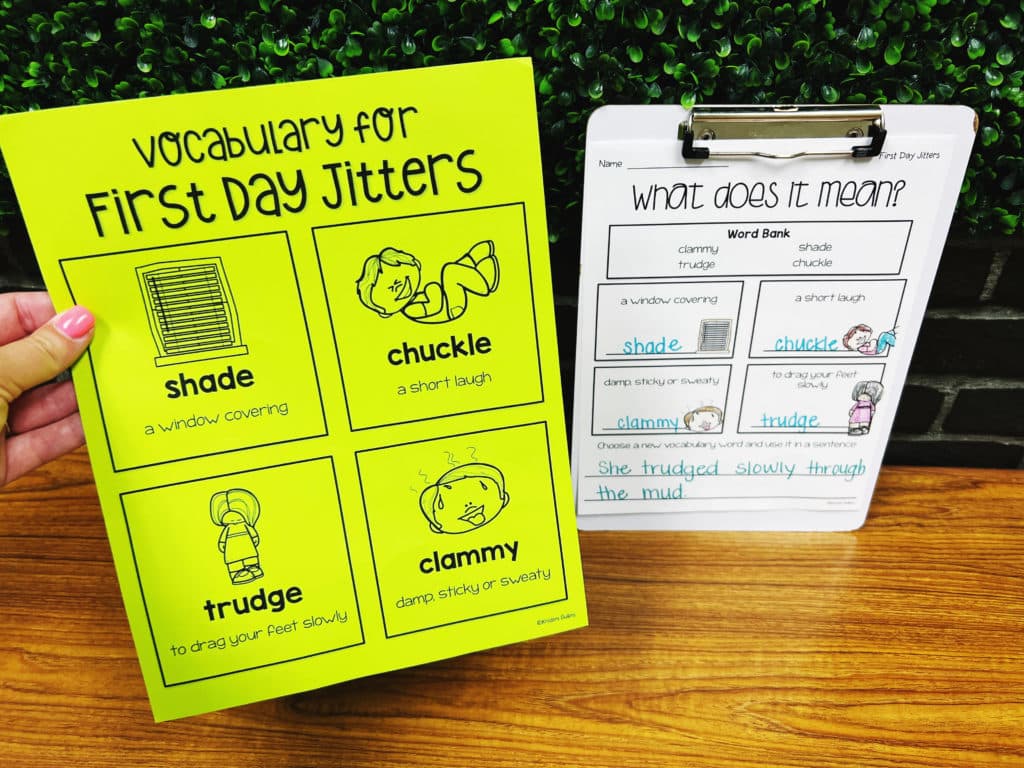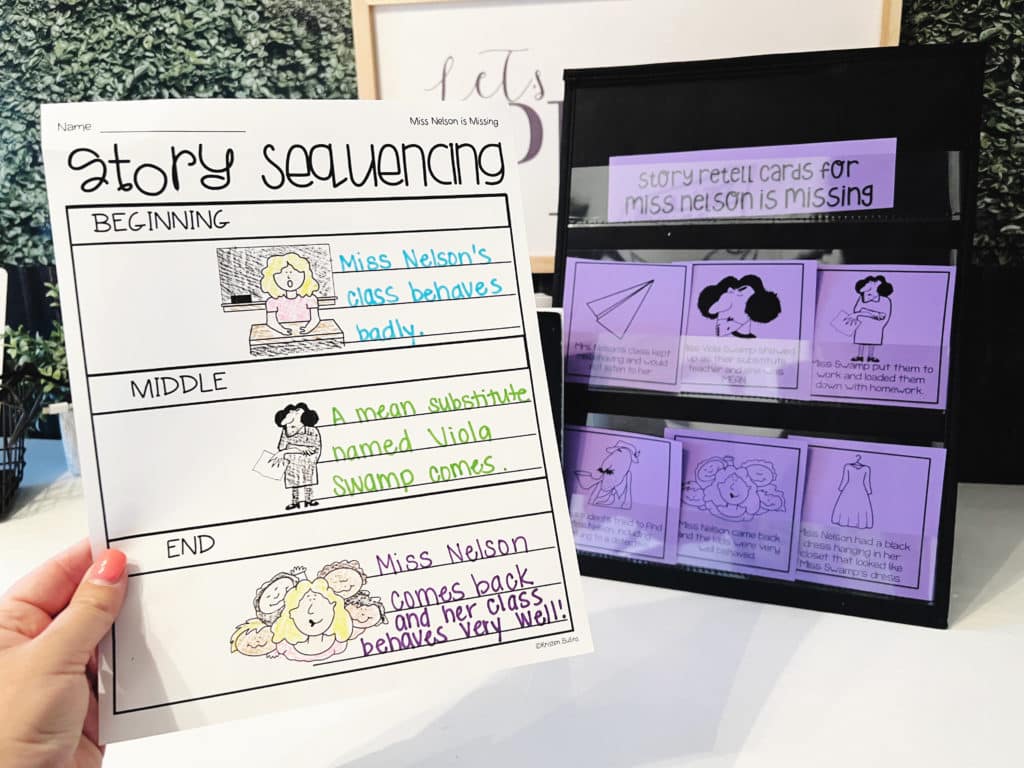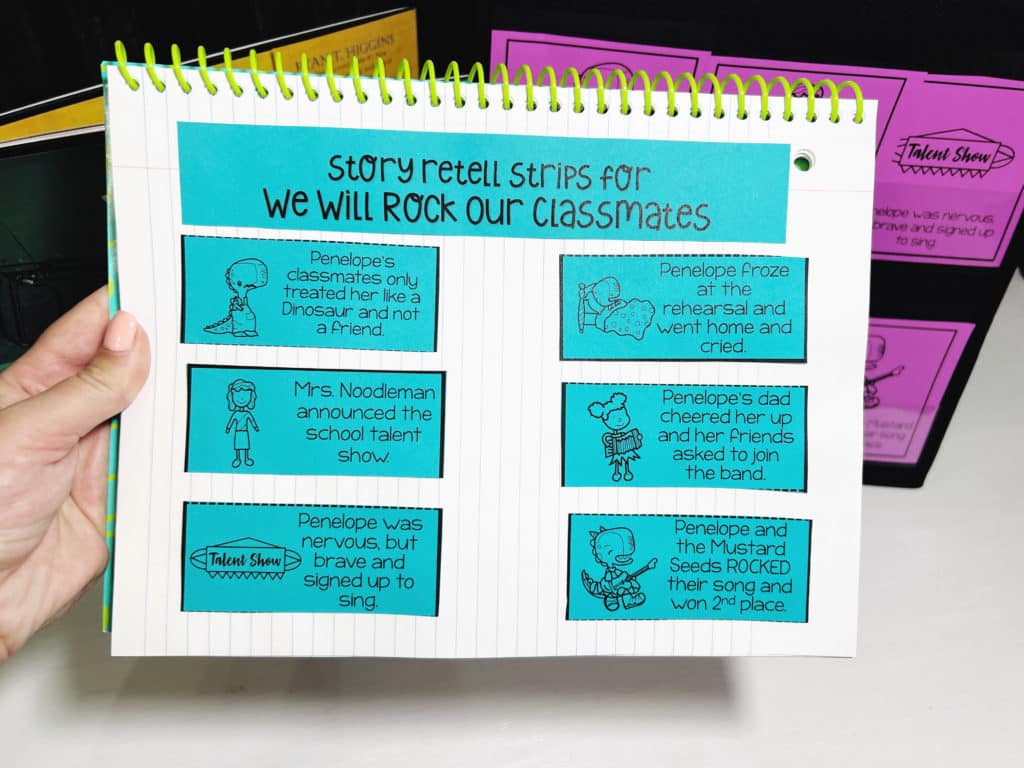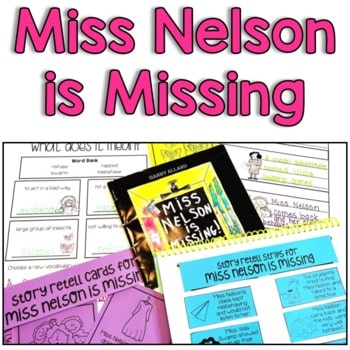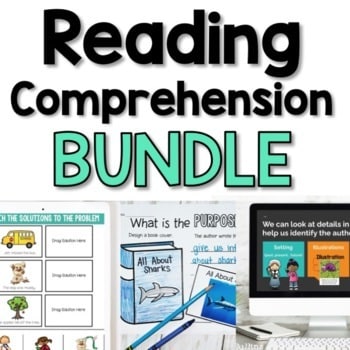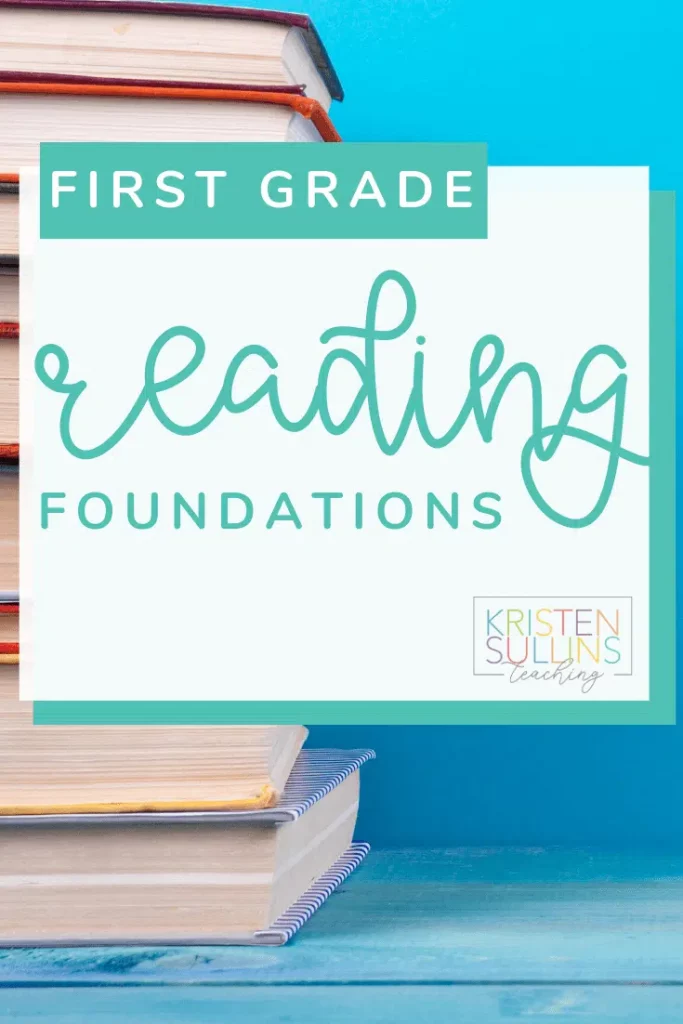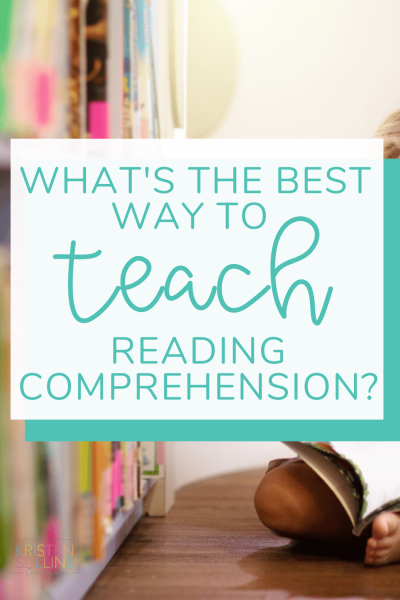There are two main schools of thought when it comes to teaching reading comprehension in first grade: book studies or unit studies.
I started teaching over a decade ago and I’ve seen the focus shift between the two multiple times. I honestly don’t believe that one method of teaching comprehension is better than the other.
I think both strategies have their place in the first-grade classroom, but I do believe that it’s all about balance!
In this post, I’ll lay out:
- What are the benefits of a book study?
- What are the benefits of a unit/skill study?
- How do you balance the two?
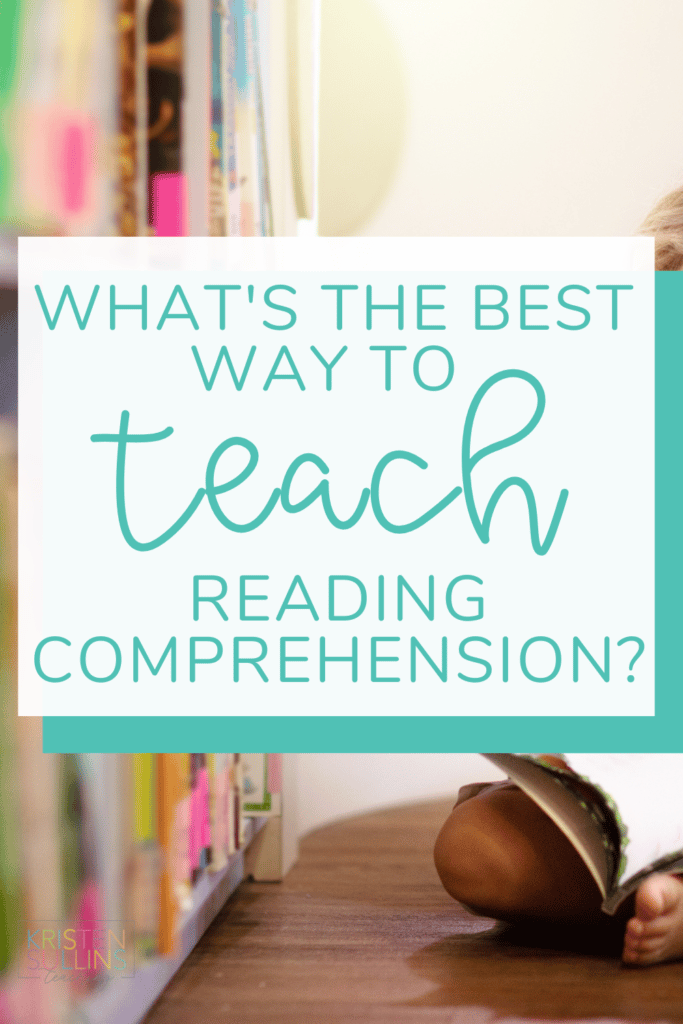
Book Studies & Reading Comprehension
The first theory of reading comprehension that we are going to look at is a book study. I will say that these were a lot more common when I first started teaching. They were very fun and popular because it essentially laid out a teaching theme for the week!
We would tie in fun art project and science/social studies lessons depending on the book study we were doing that week.
Book studies also tied in perfectly with holiday seasons!
Now, it seems that we curriculum and standard expectations are so high that it leaves very little time for the “fun” book studies that we used to do.
But I think they definitely still have a place in the first grade classroom!
What is a book study?
A book study is a typically a week long unit of reading comprehension skills that focus on one single book, a book series or maybe even one particular author.
There is not a singular skill focus in a book study, rather you are covering a wide range of different reading comprehension skills, typically one skill per day.
Why are book studies effective?
There are several different advantages to doing a book study.
#1: Book Studies save you time
Because you only have to read a full book one time during a book study, you are saving a lot of time. On days 2-5, you aren’t reading the book again, you are simply reading a few pages or referring back to a few parts of the book.
#2: Students build confidence
Because students become VERY familiar with the text in a book study, it builds their confidence in practicing all the different comprehension skills. Students are having to try to understand multiple different texts since you are only focusing on one book.
#3: Focus on vocabulary
One of the great comprehension boosters you can give a student is helping them learn new vocabulary through a book! By focusing on one text during a book study, you give your students the time to learn and practice the vocabulary in that book!
#4: Great opportunities for writing activities
Although you might not find time (or the need) to tie in a fun craft to your book study at the end of the week, book studies do offer excellent opportunities for creative and story writing. The great news is, since you have studied this book in such great detail, you can put these writing opportunities in your writing station at the end of the week or even in the weeks to come!
How to Plan a Book Study
- Determine the skills
Although a book study allows you to cover a multitude of skills, it’s important to narrow it down to 4-5. Decide ahead of time, which skills are most important to cover RIGHT NOW.
- Set a timeline
Plan out your week. The first day of a book study is typically spent reading the book, working on vocabulary and maybe some basic retell. Once you have that set, you can plan out your week using the skills you determined in step one.
- Find activities
This can sometimes be the most difficult step because this is where you search for the activities that you need to fit your book study plan. I recommend using similar formats throughout the year so that it provides consistency for you and your students. For example, each time you do a book study, use the same Retell worksheet so you aren’t having to explain a new format time and time again.
- Repurpose those activities
When it comes time to plan your station or independent activities, or even your small group activities, take a look at your whole group activities FIRST. Repurpose (meaning re-use) as many of those whole group activities as you can! Your students are already familiar with them so it saves you time and builds their confidence!
To make your teaching life easier, make sure you use this framework again and again.
Skills Unit to Build Reading Comprehension
A comprehension skill unit is one that focuses on one single comprehension skill. These units are typically two to four weeks long.
Why are Comprehension Units effective?
These units allow you and your first grade students to take a deep dive into reading comprehension skill.
These units are designed to allow students to really build and flex that single comprehension skill.
How to Plan a Comprehension Unit:
- Determine the skill
- Take a deep dive into the standard
- Assessment
- Backwards plan activities
- Activities are designed more for instruction: sorting activities, slideshows, etc.
- Repurpose those activities
My favorite comprehension unit activities:
- Start with an interactive slideshow
- Practice with a non-text activity first
- Engage kids with related videos
- Build anchor charts together as a class
- Use sentence stems to answer comprehension questions together in a mentor text/read aloud
- Have students respond to the text
- Use the non-text activity in a reading station
- Continue using the sentence stems in small group lessons
Which is better for reading comprehension?
Like I said earlier, I really don’t think that one strategy is better than the other. I truly believe that both book studies and comprehension units both have a place in the first grade classroom.
I think what really matters, is finding the strategy that best fits your needs at that particular time.
Here are a few questions you can ask yourself to help make that decision:
Question 1: How much time do you have?
Book studies typically take you about a week, these are great if you are short on time, or in between large units.
Skills units can take anywhere from one week to a month, depending on your curriculum schedule or time of year.
Because of the difference in time, I think it’s a great idea to alternate the two strategies, using book studies to fill the gaps between comprehension units or during holiday weeks!
Question 2: Have you reviewed this skill before?
If this is a new skill you are introducing to your class, then I would definitely start with a comprehension unit. Your students need time to learn and practice the skill.
If this is a skill that you are reviewing or even one that they might have learned in a previous grade, then a book study might be what they need to brush up on that skill in a quick and easy way.
Question 3: What do YOU feel like doing?
Okay, this sounds silly, but seriously… what do YOU feel like doing? Students can tell when you are really passionate or excited to teach something.
Choose the method that sparks joy for you and it will spark joy for your students as well!
Reading Comprehension Activities for First Grade
If you are looking for “done for you” reading comprehension activities, everything you've seen in this post (yes, both book studies AND comprehension units) can be found here:

